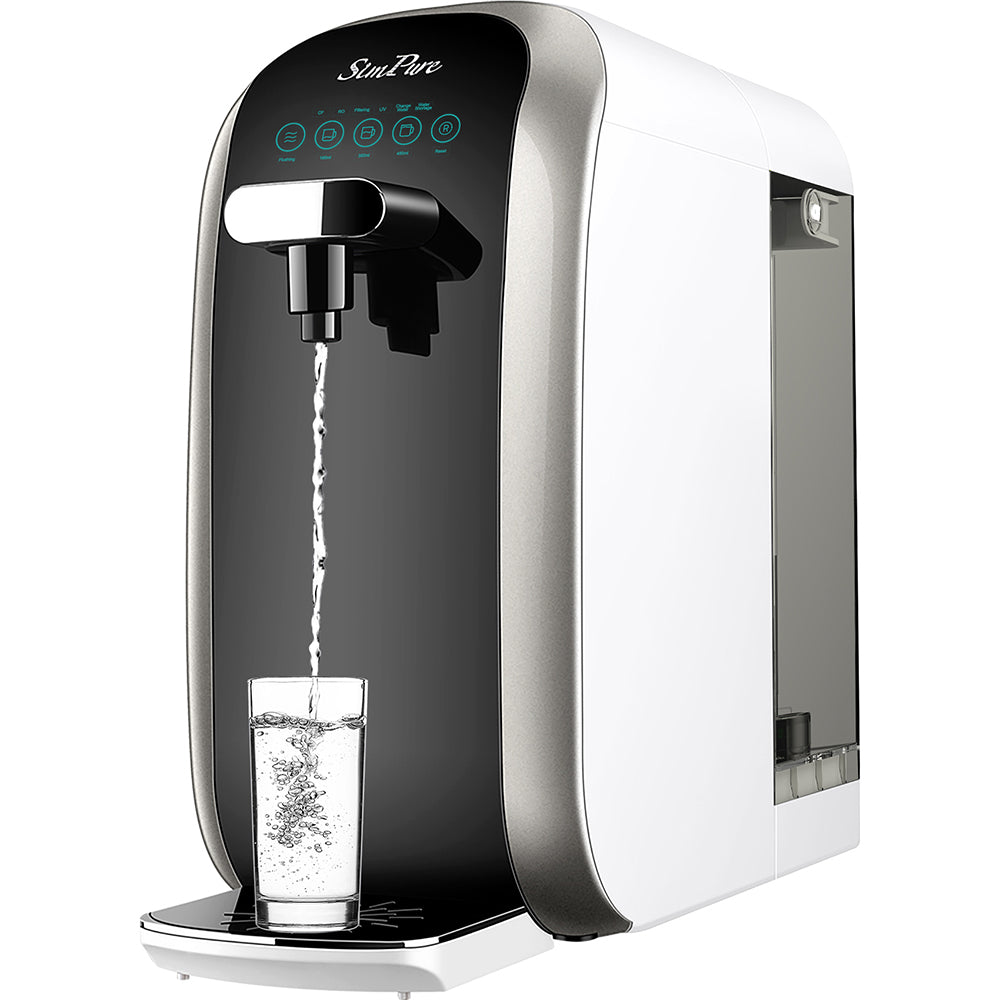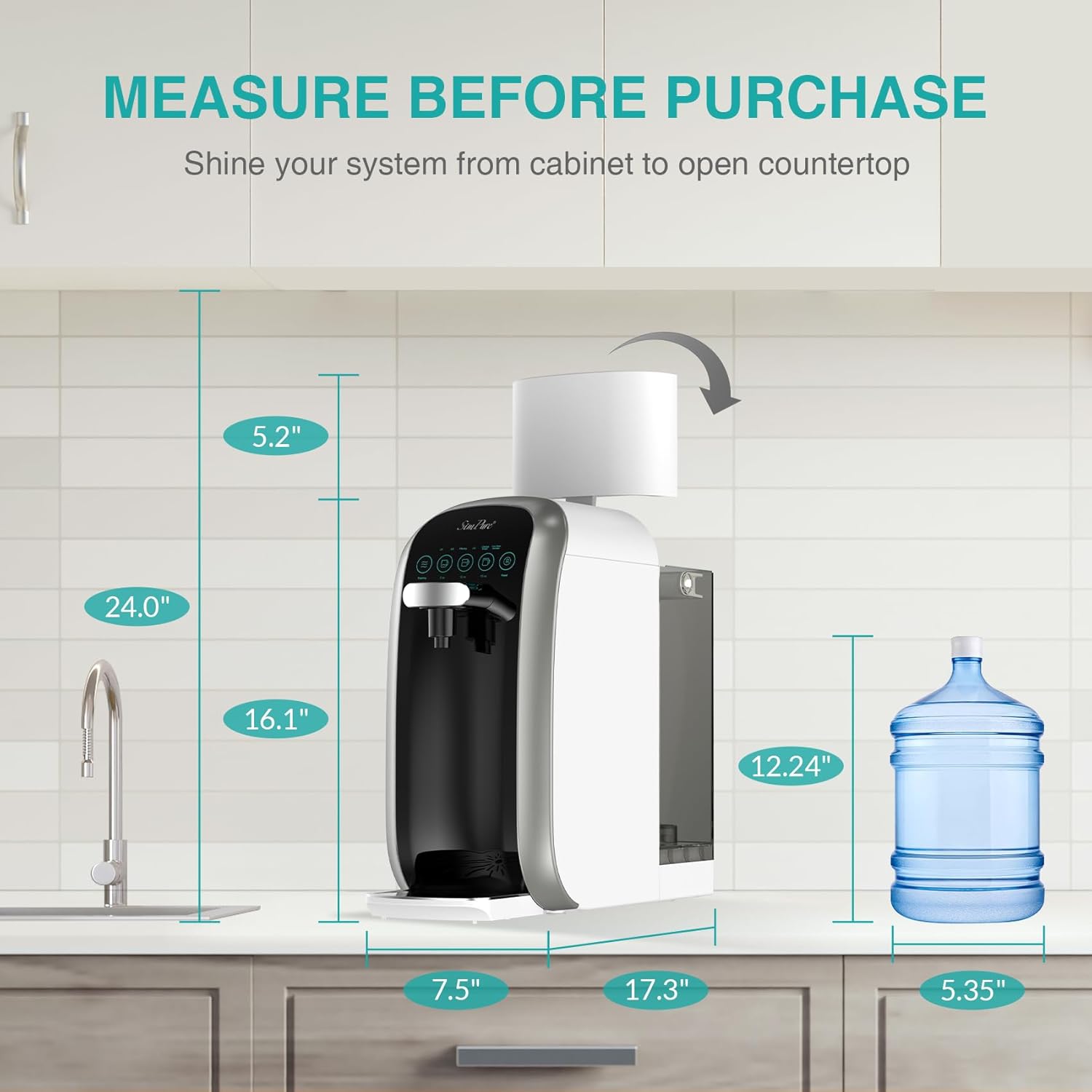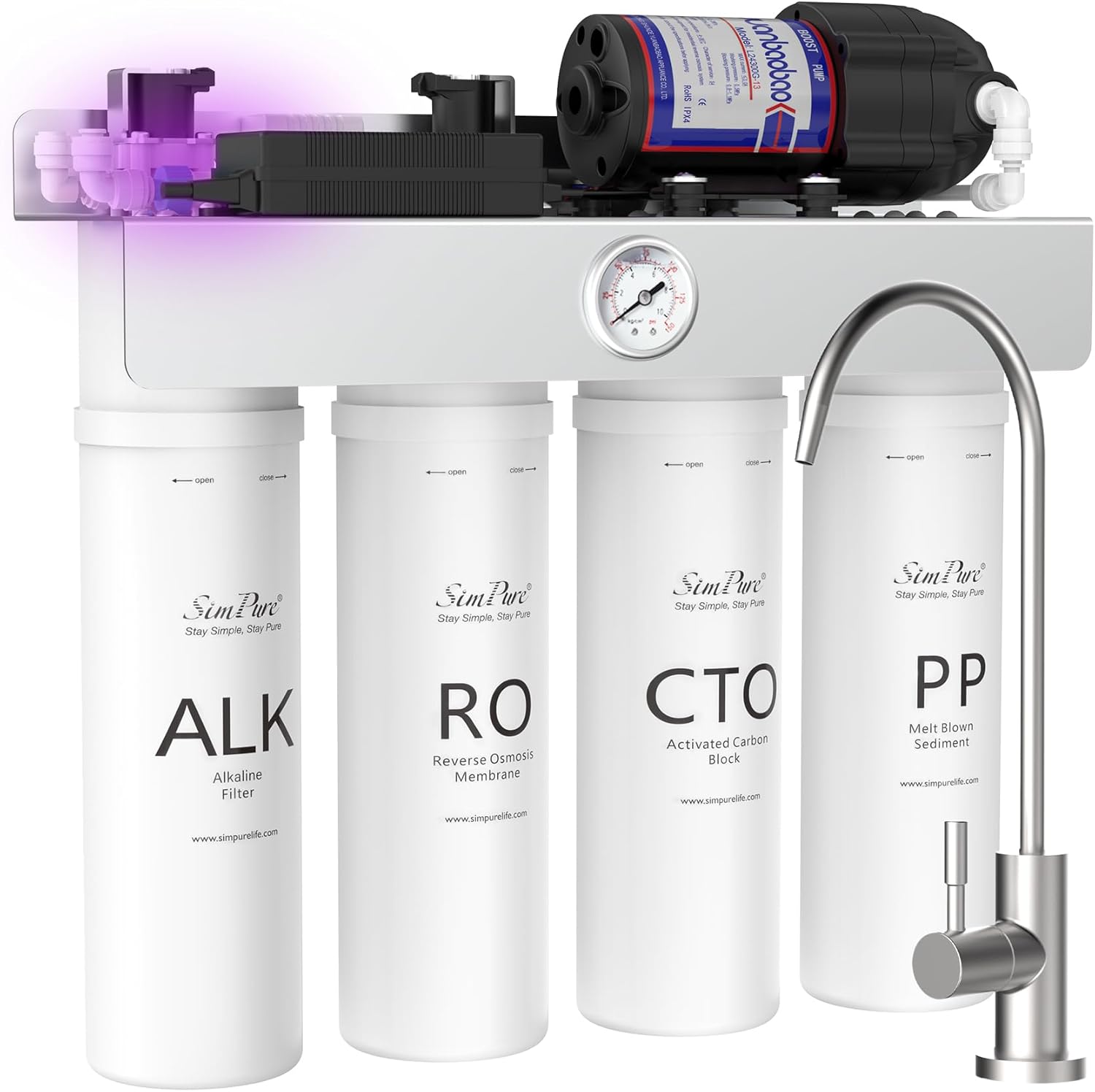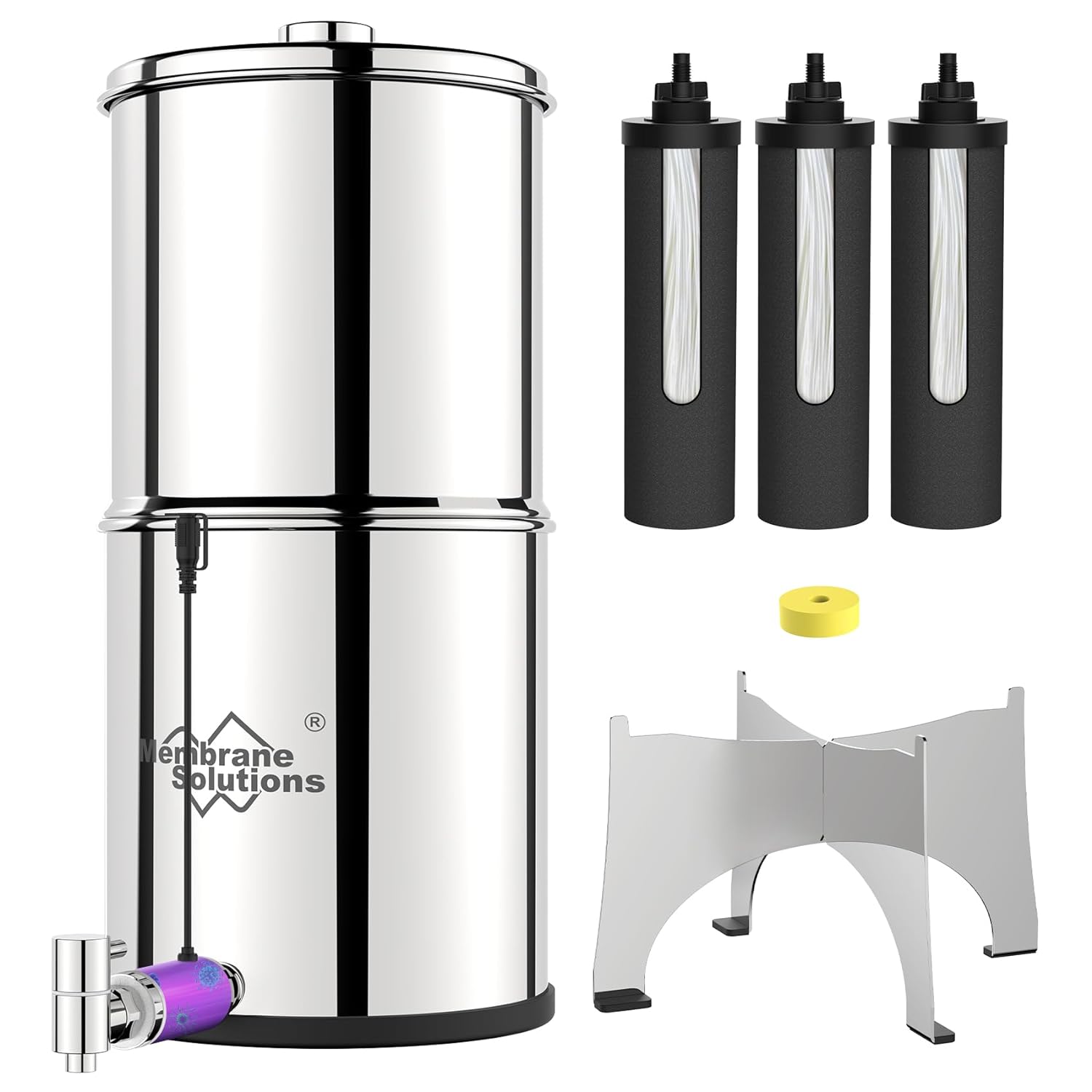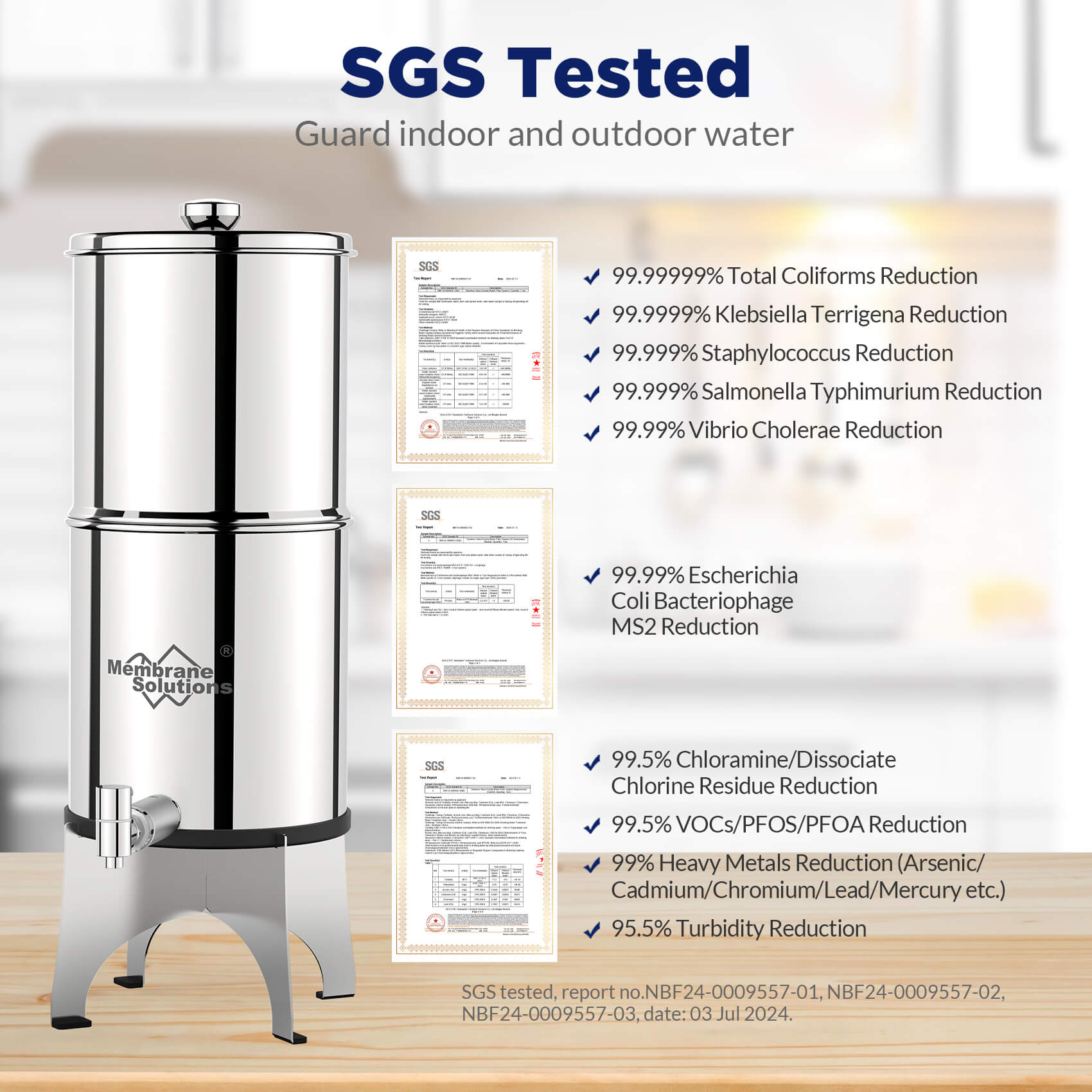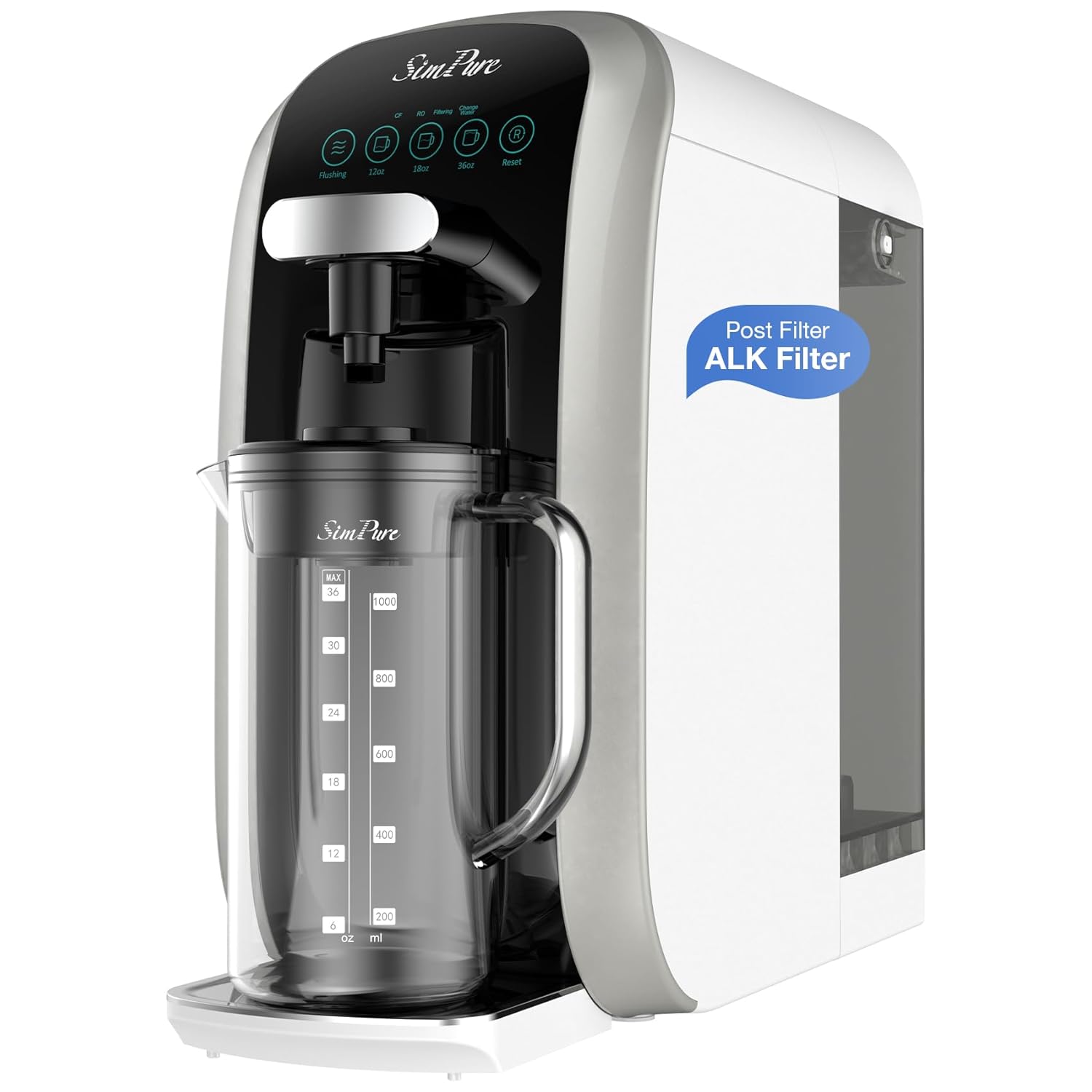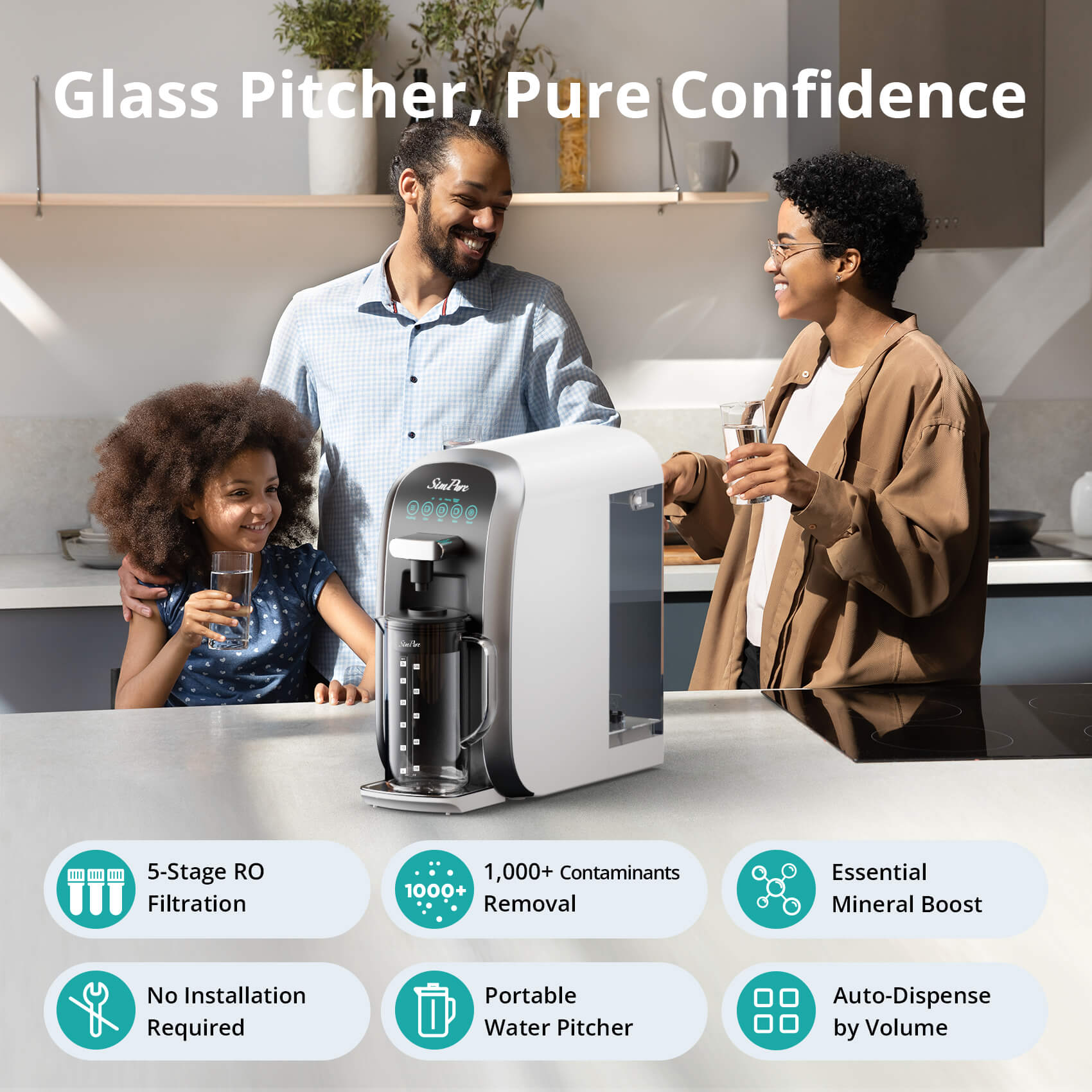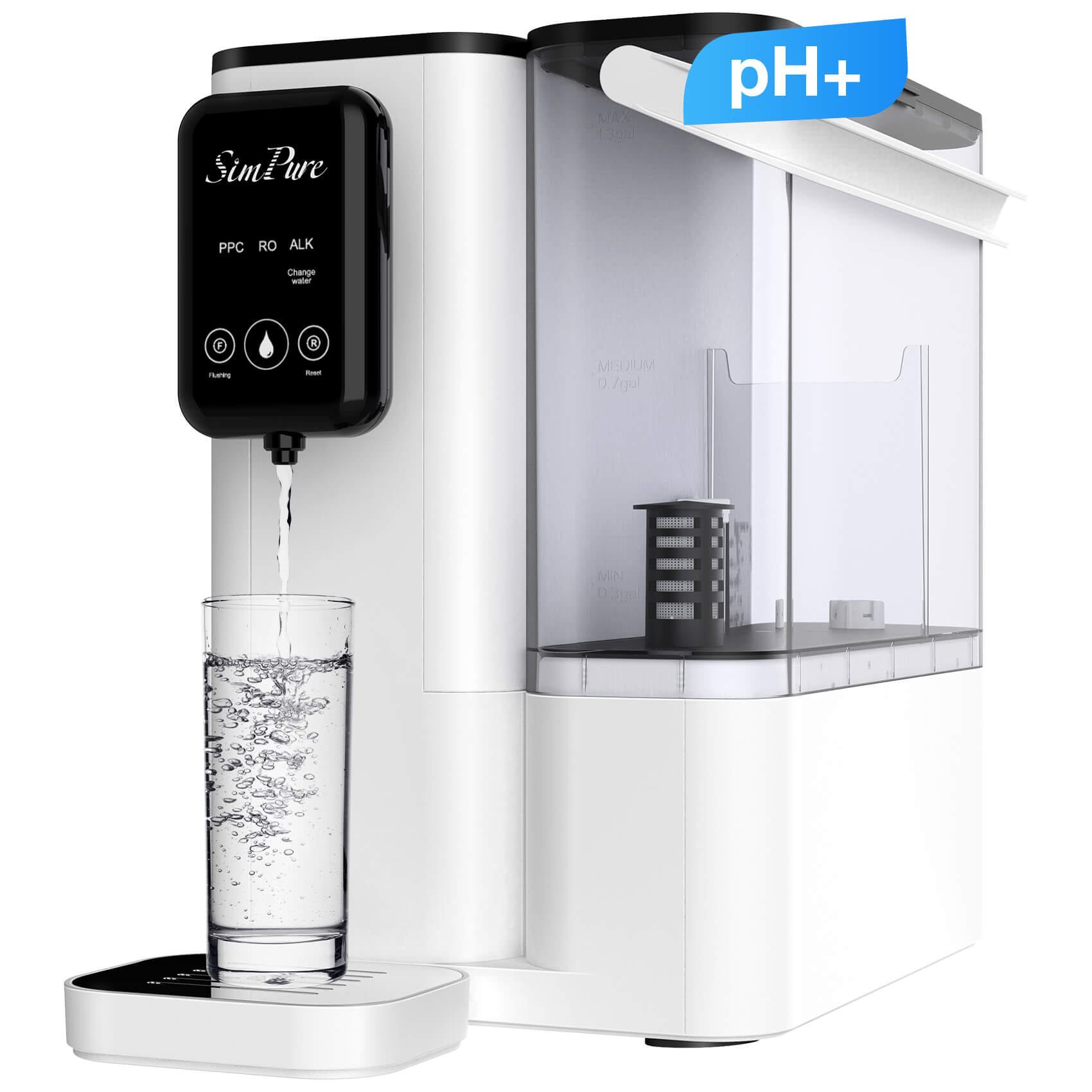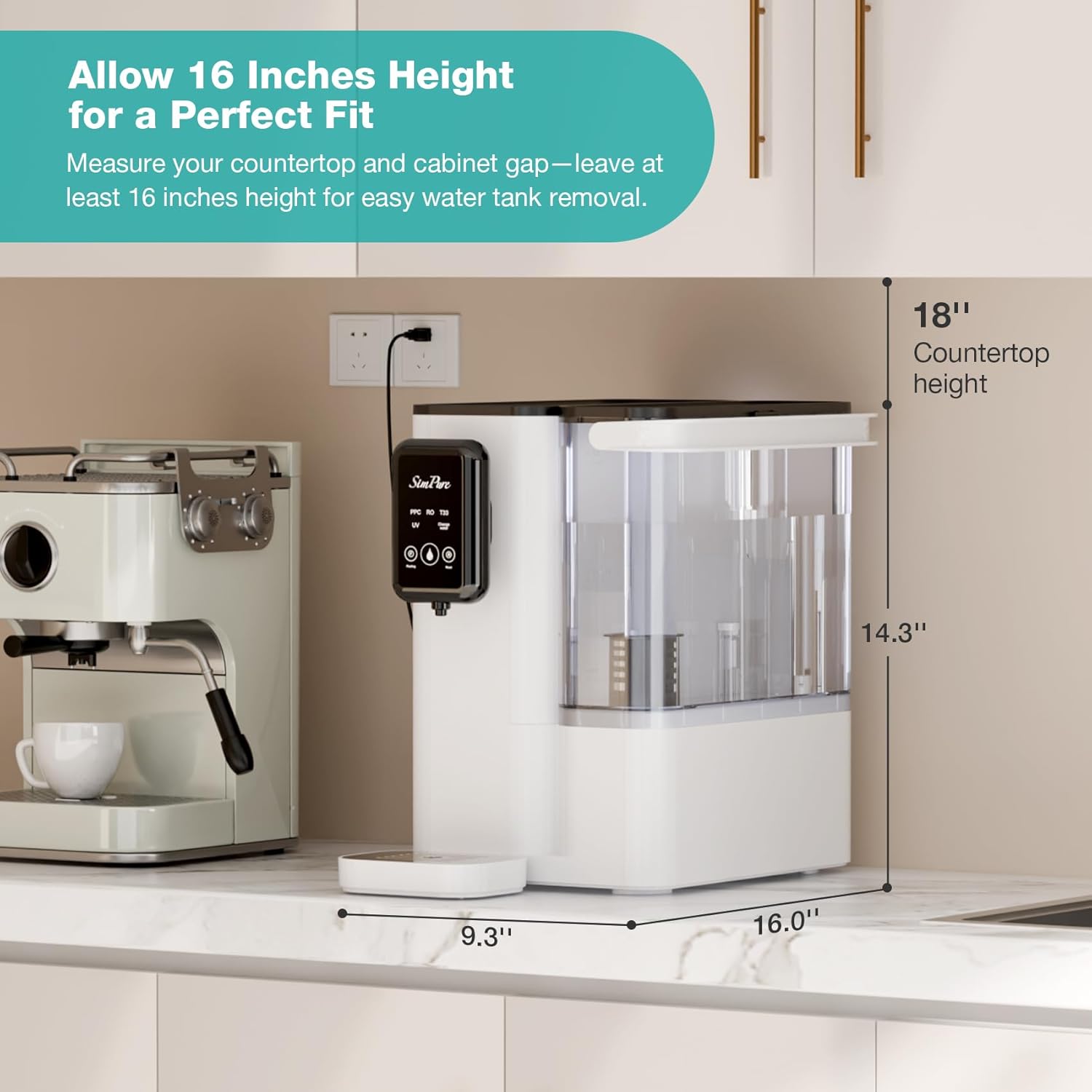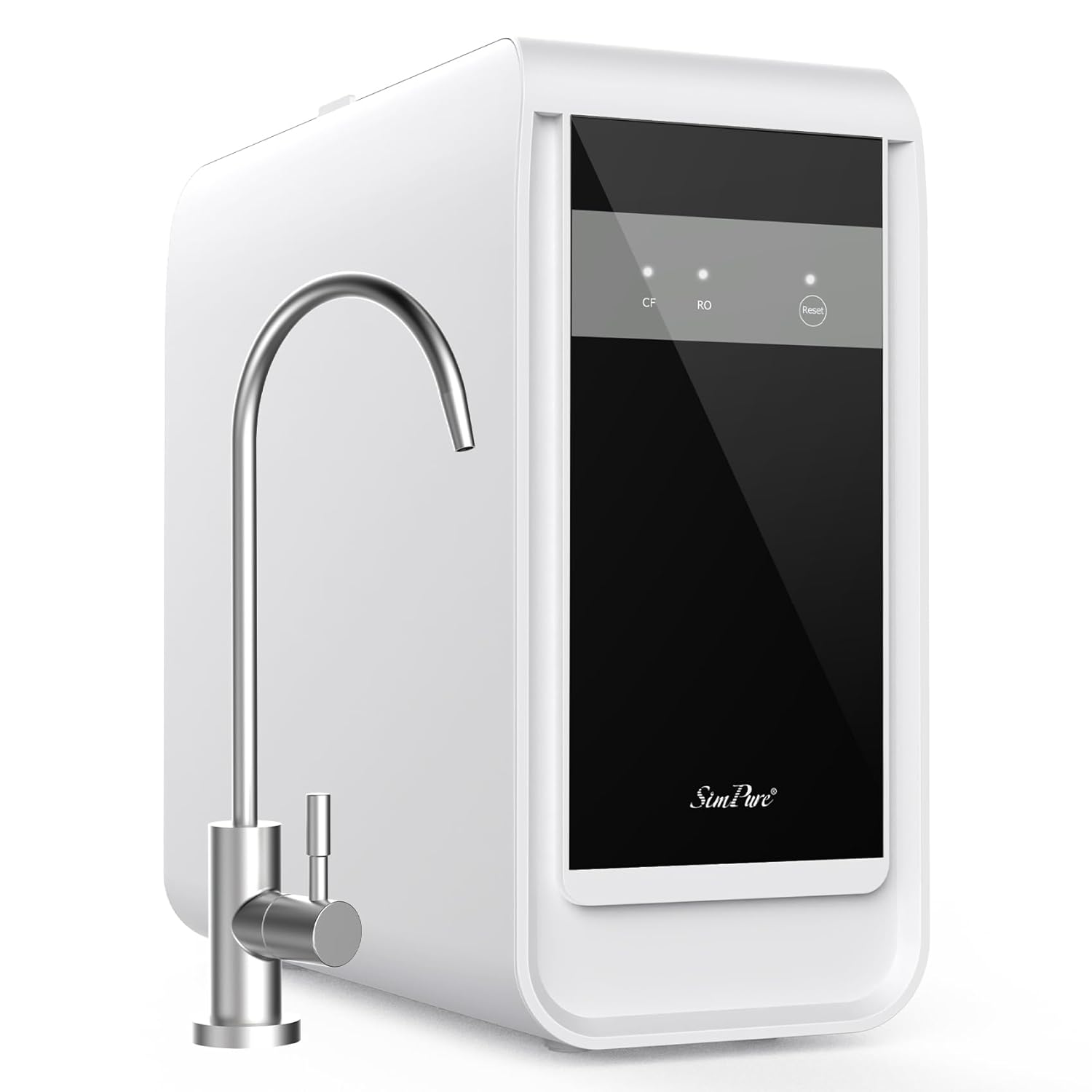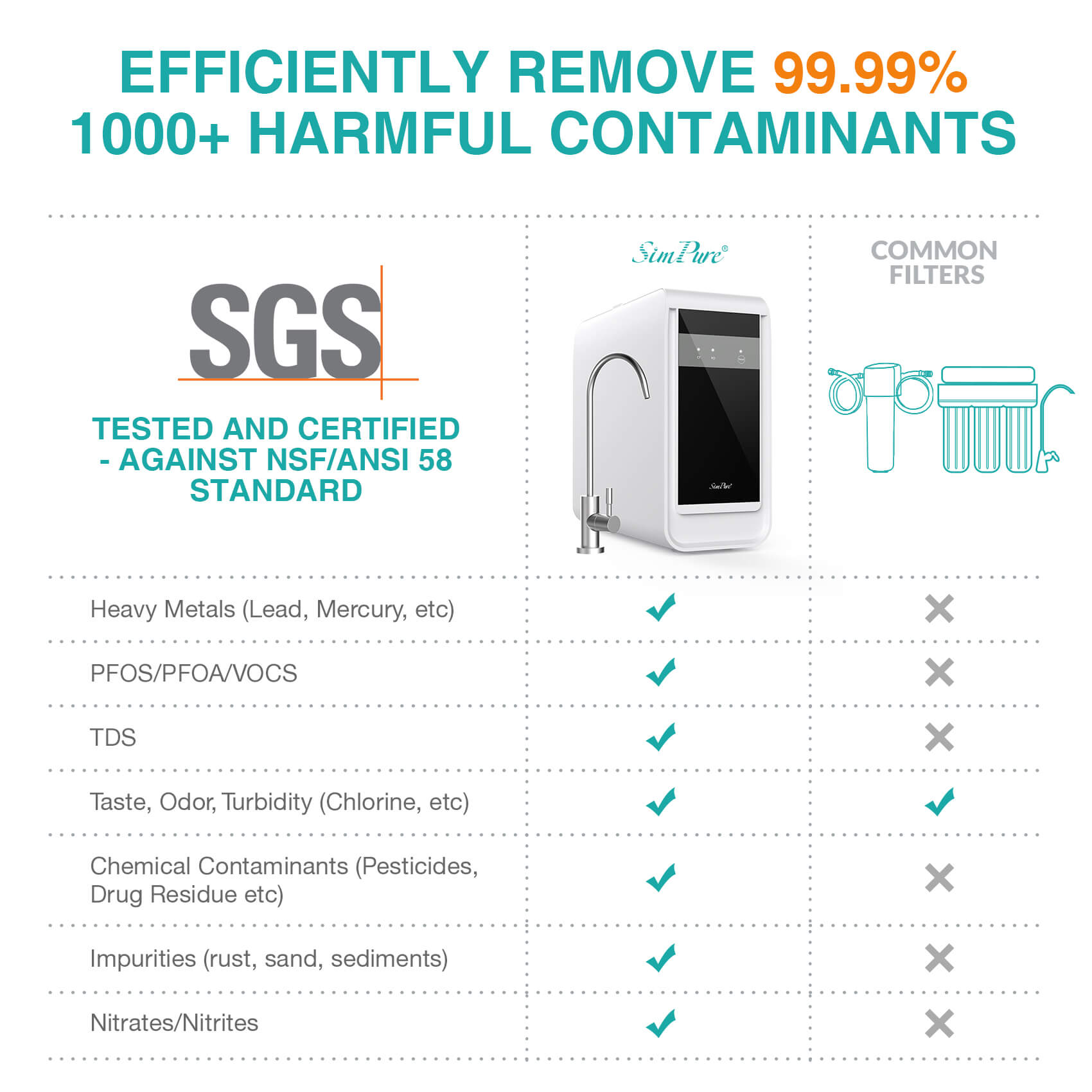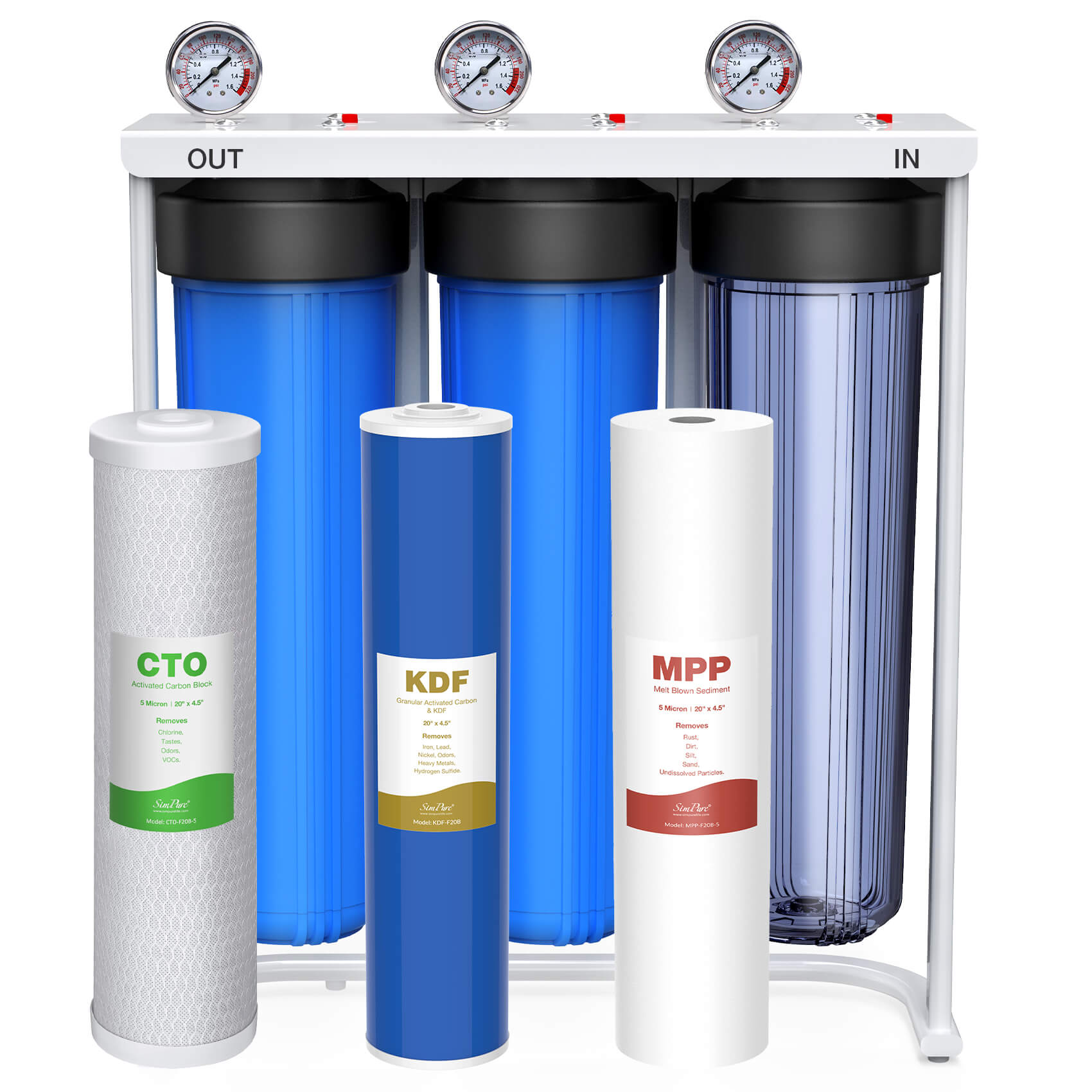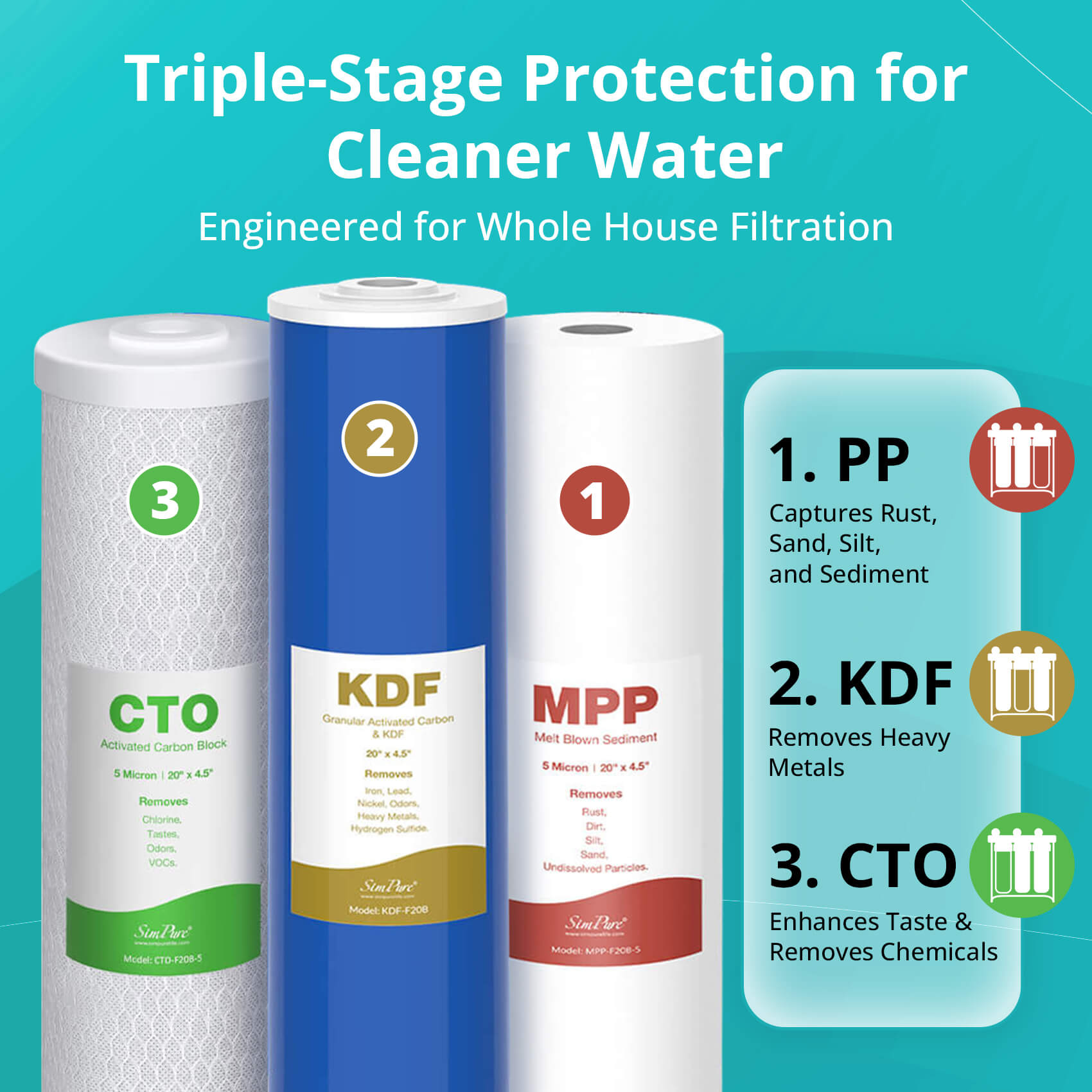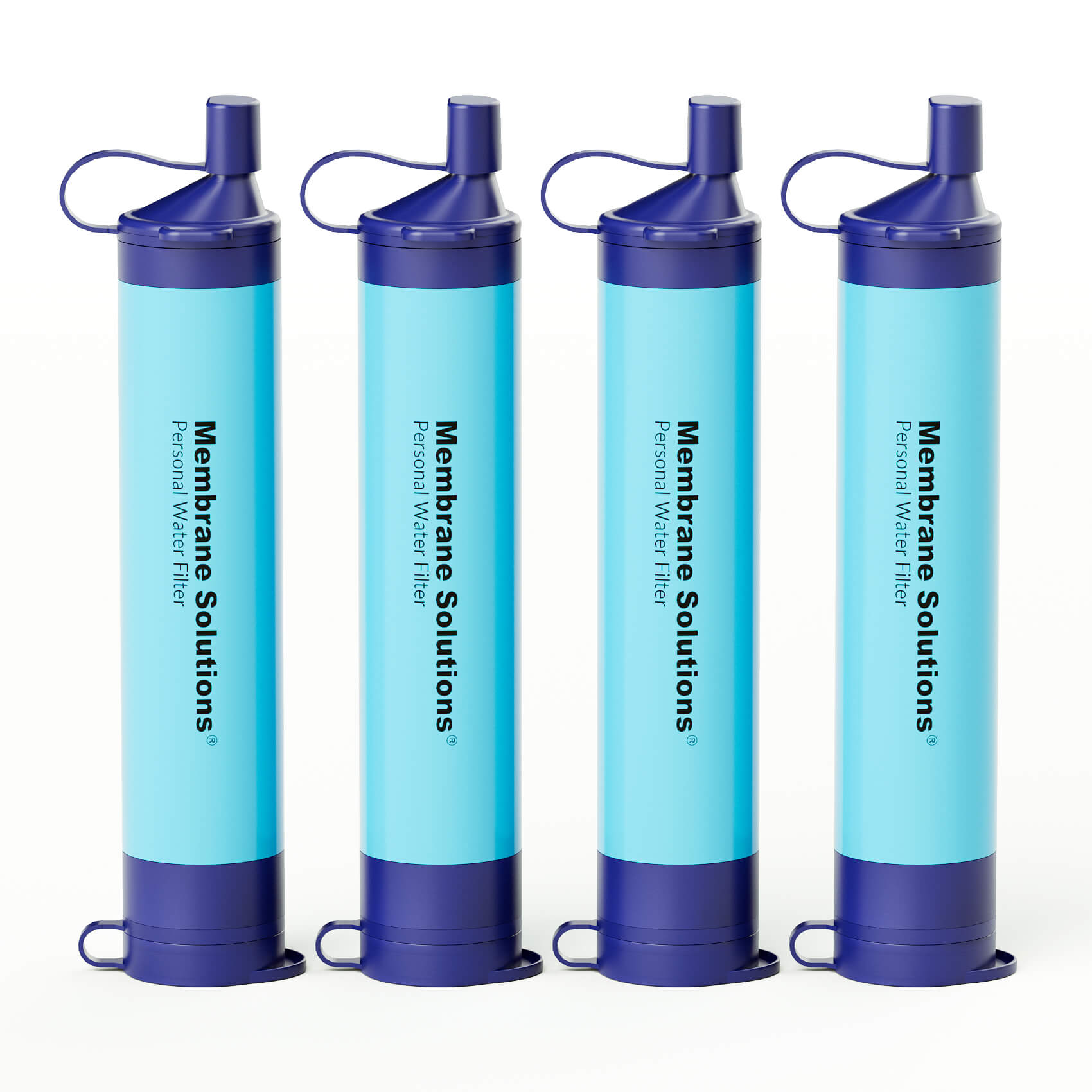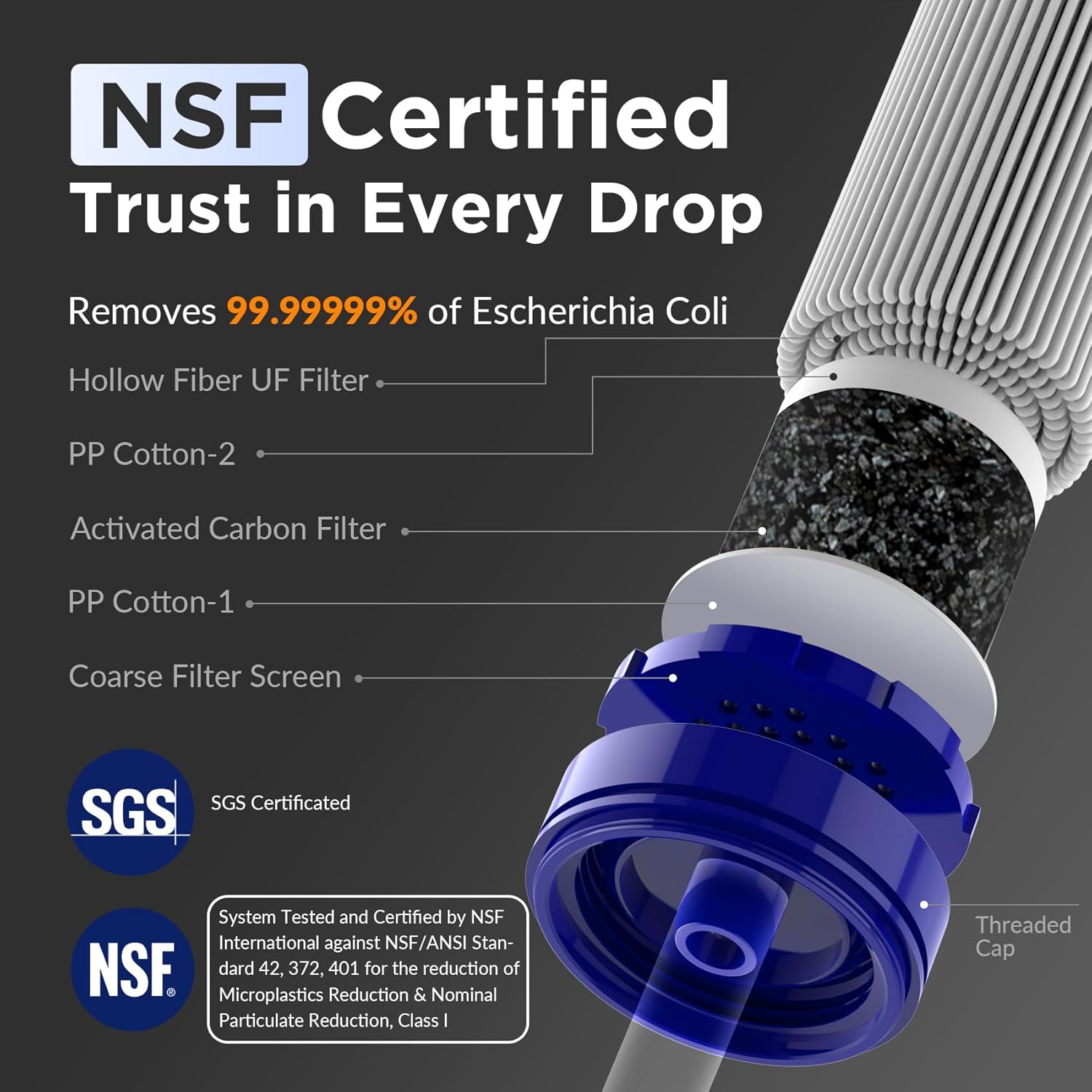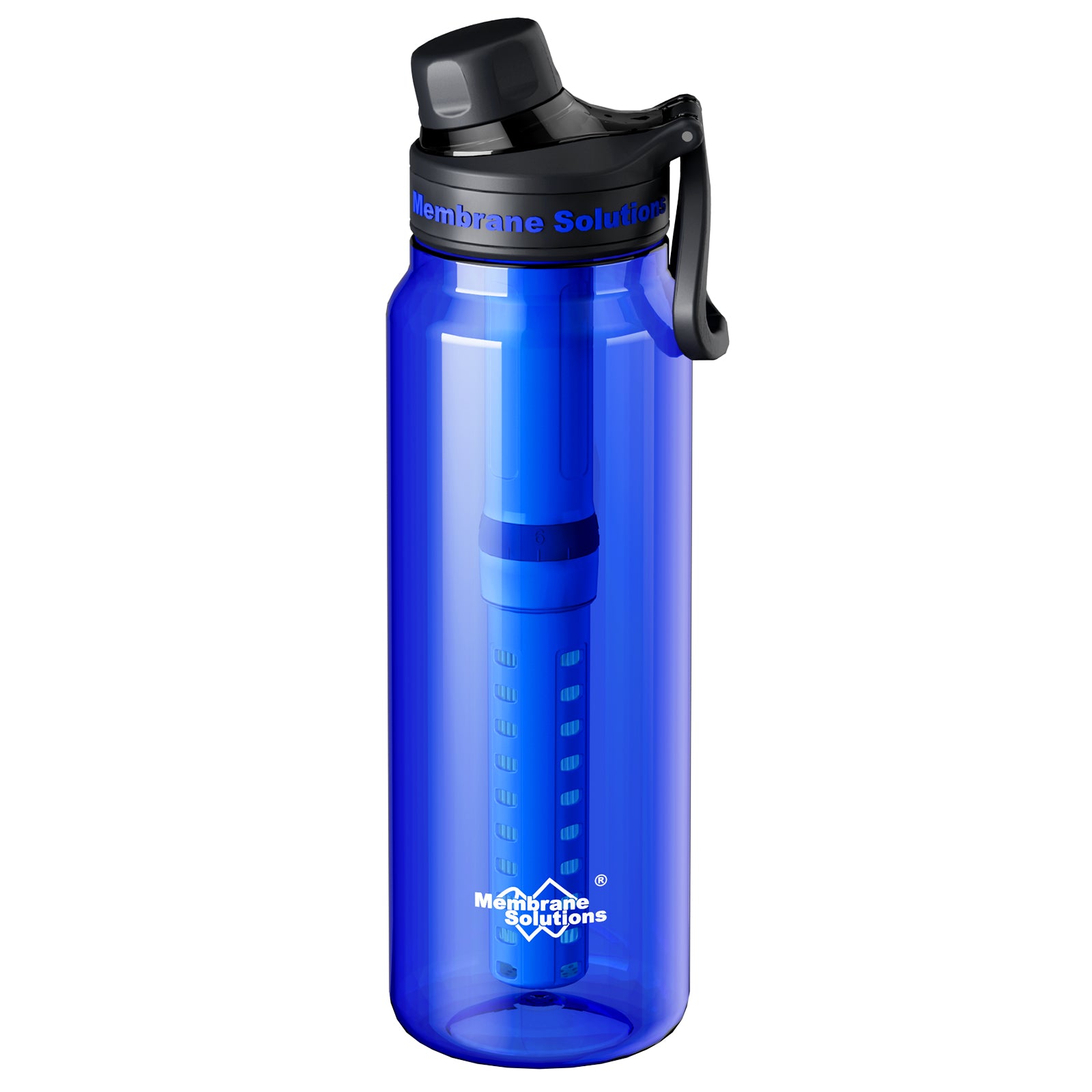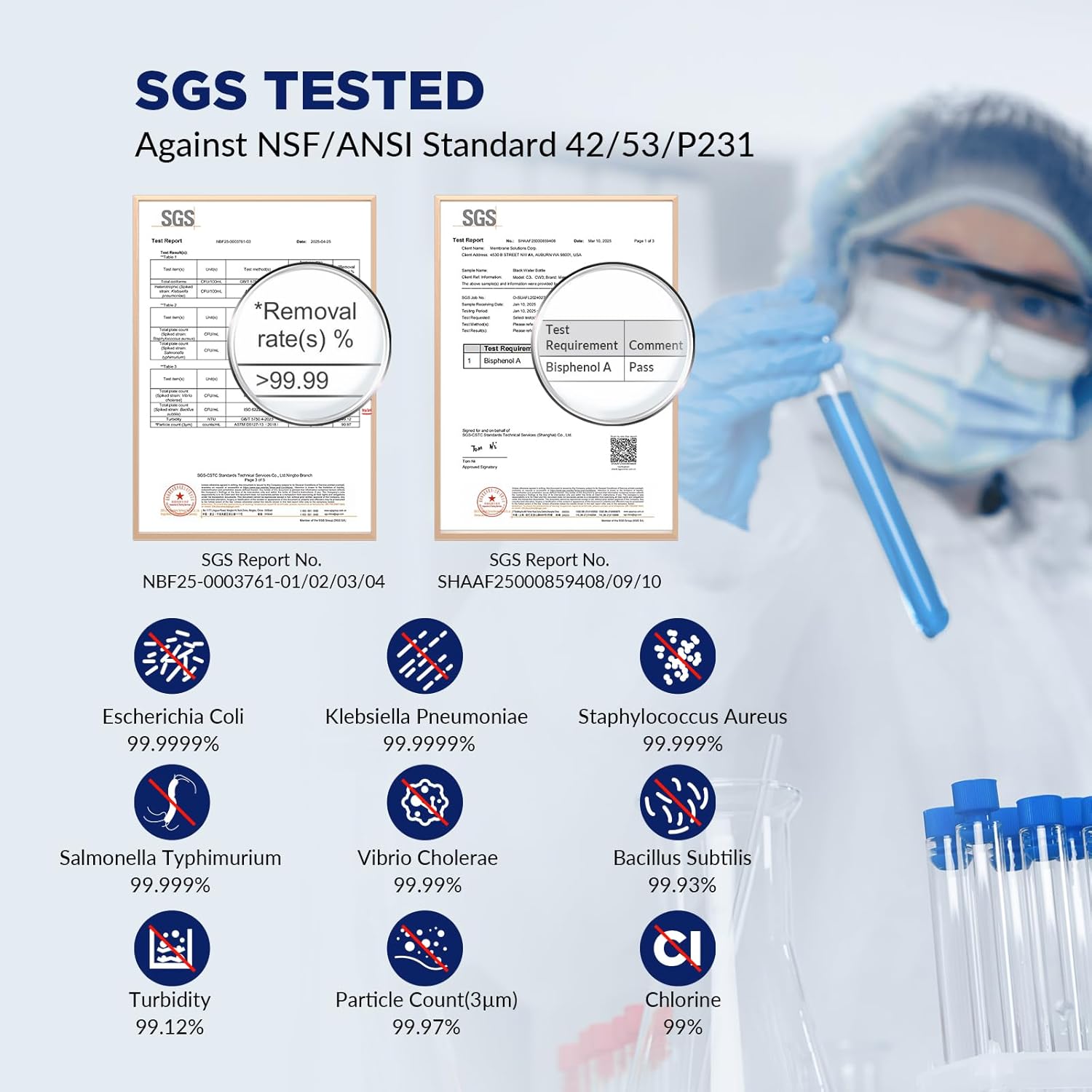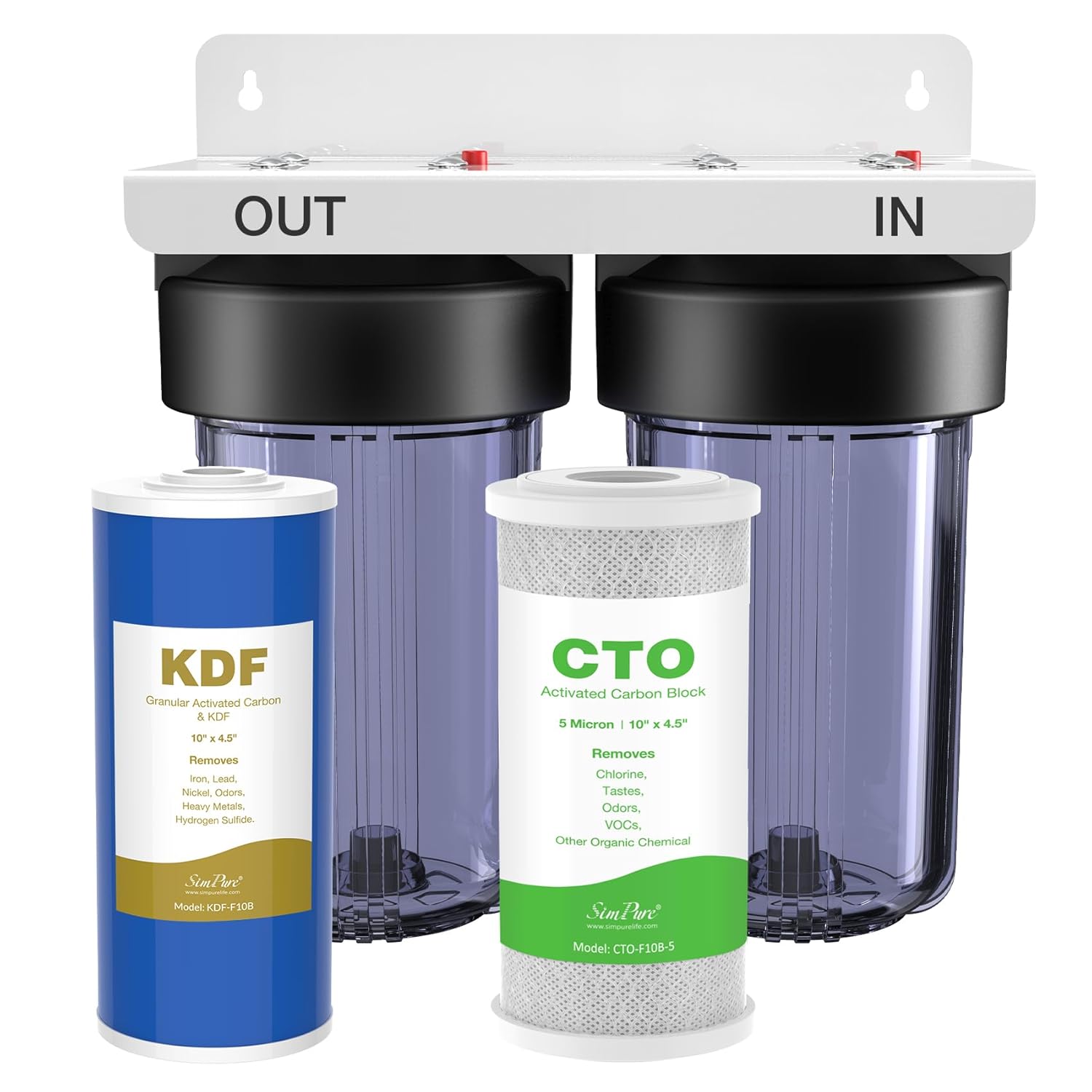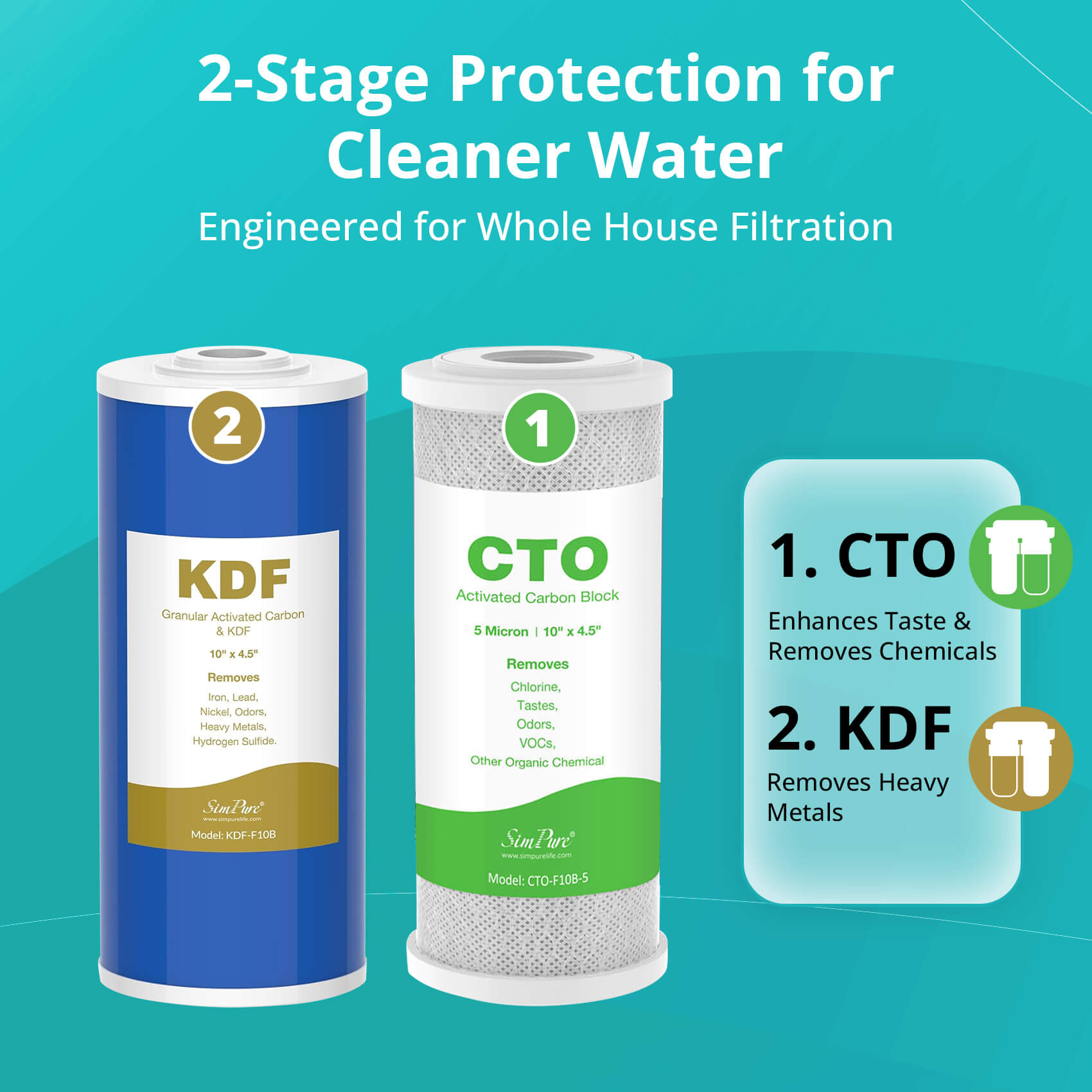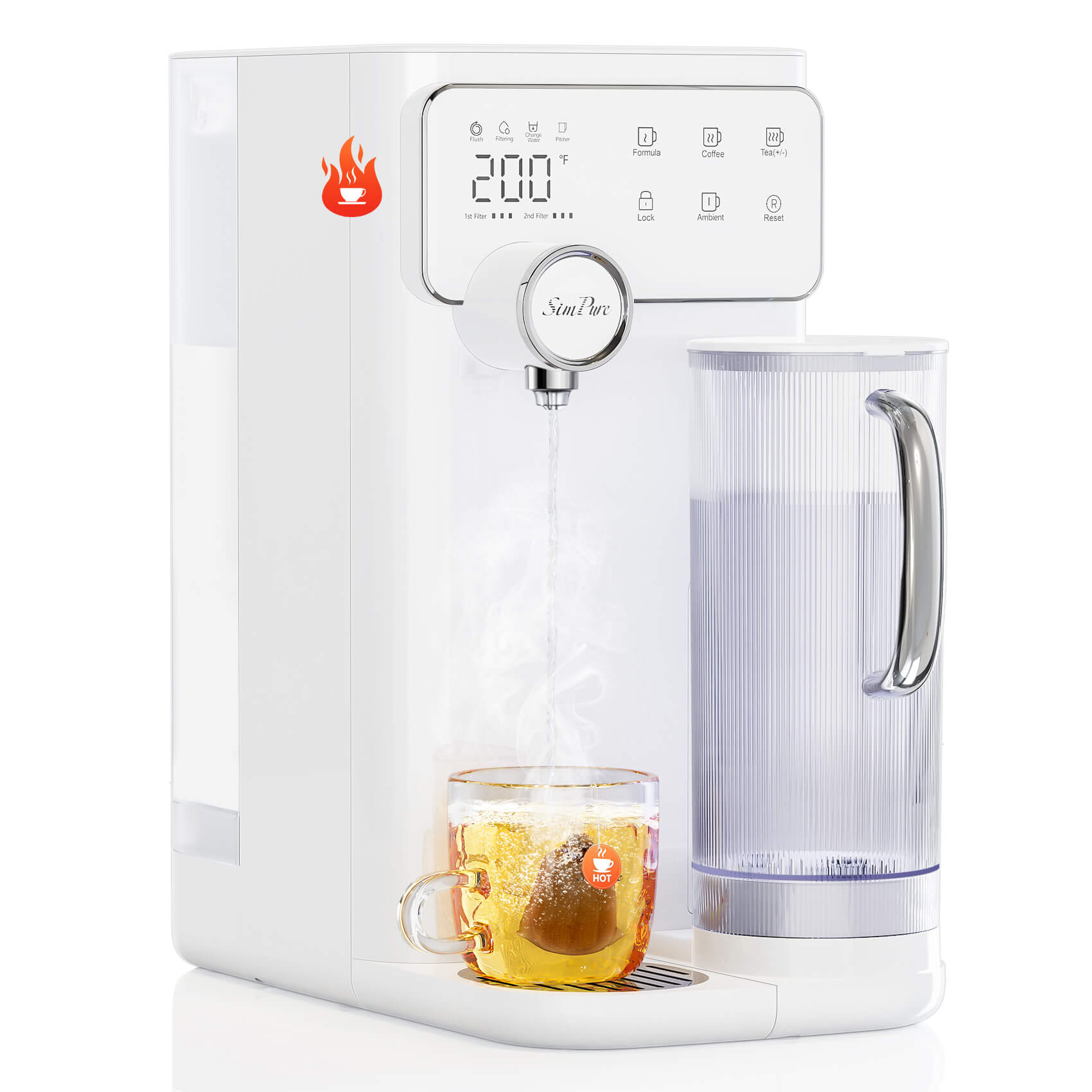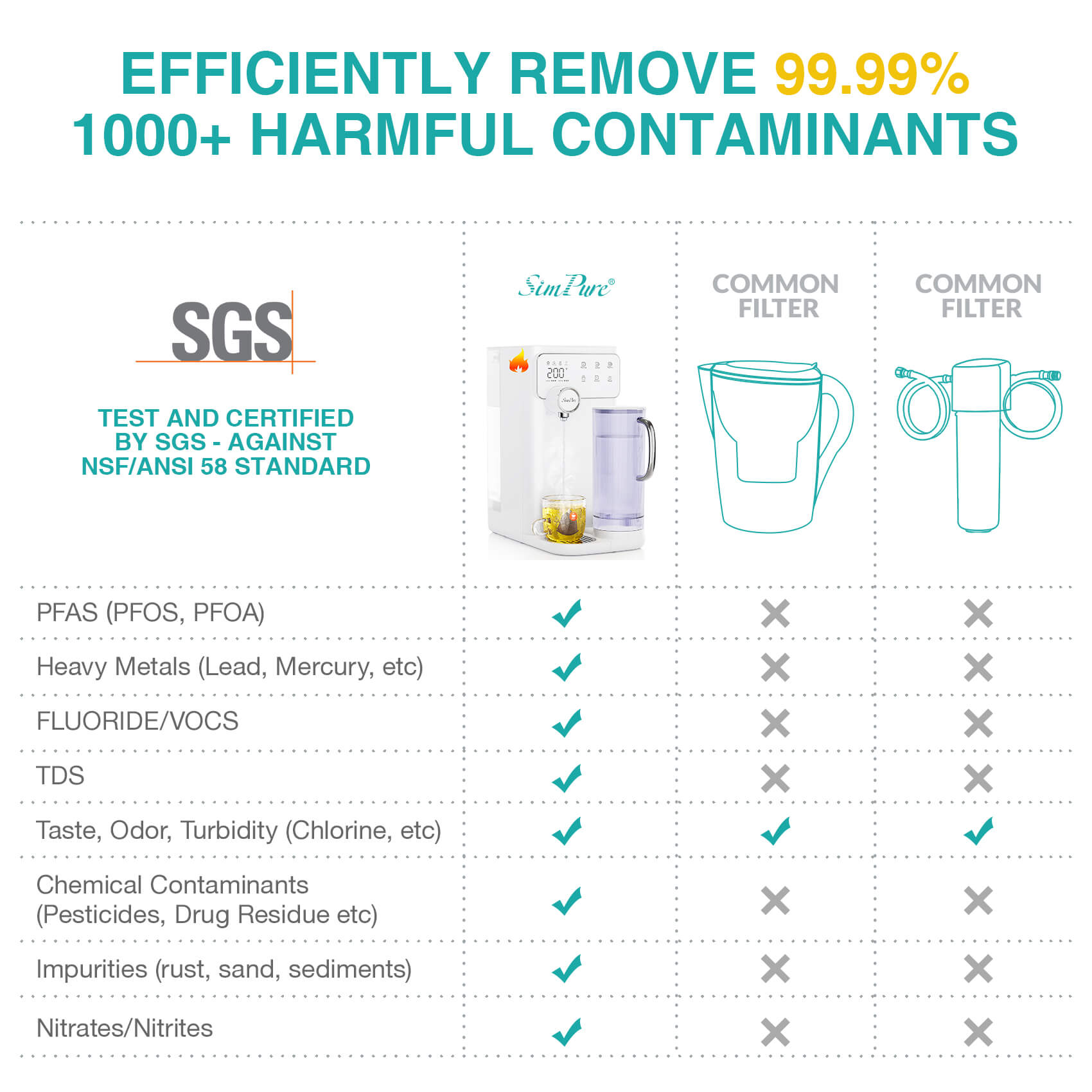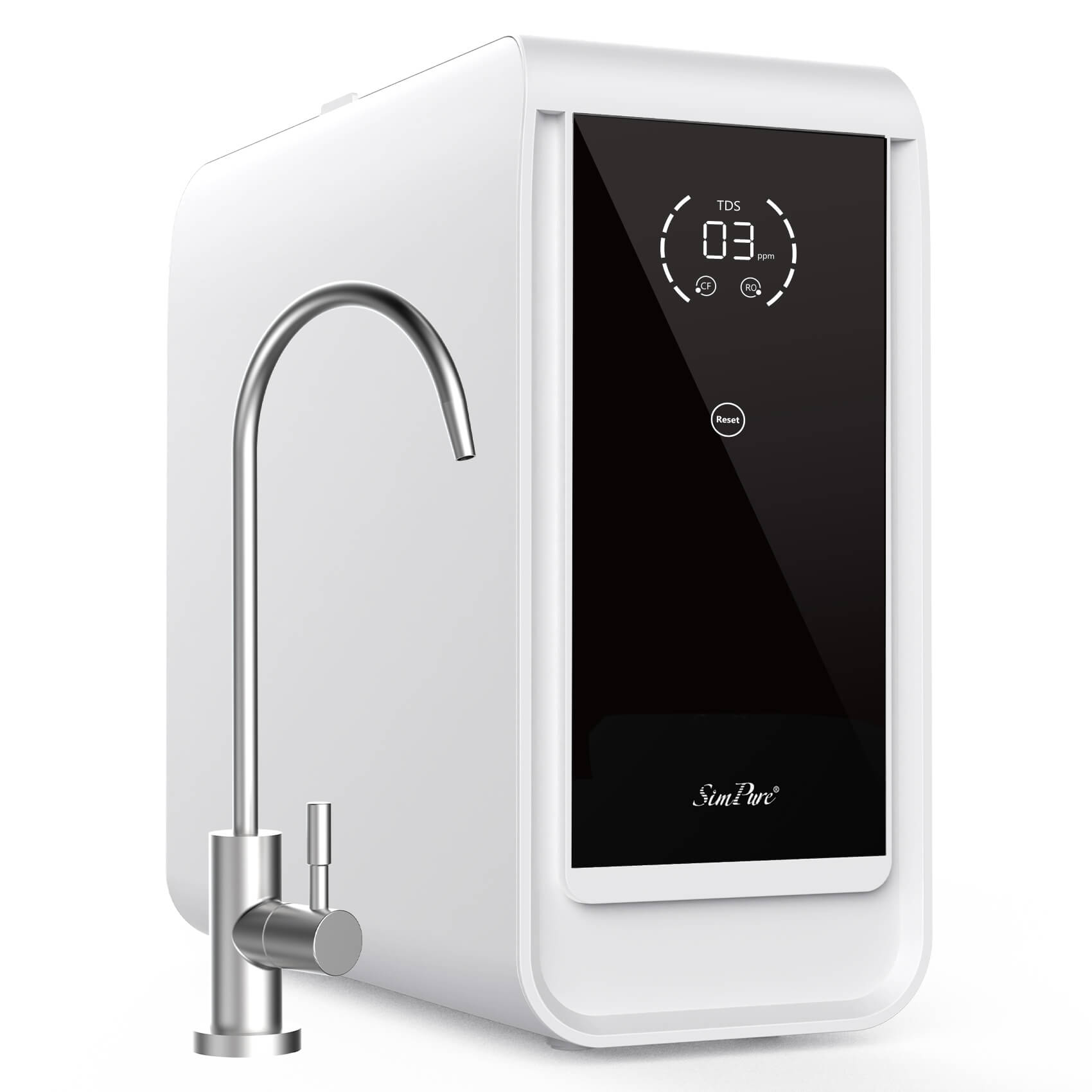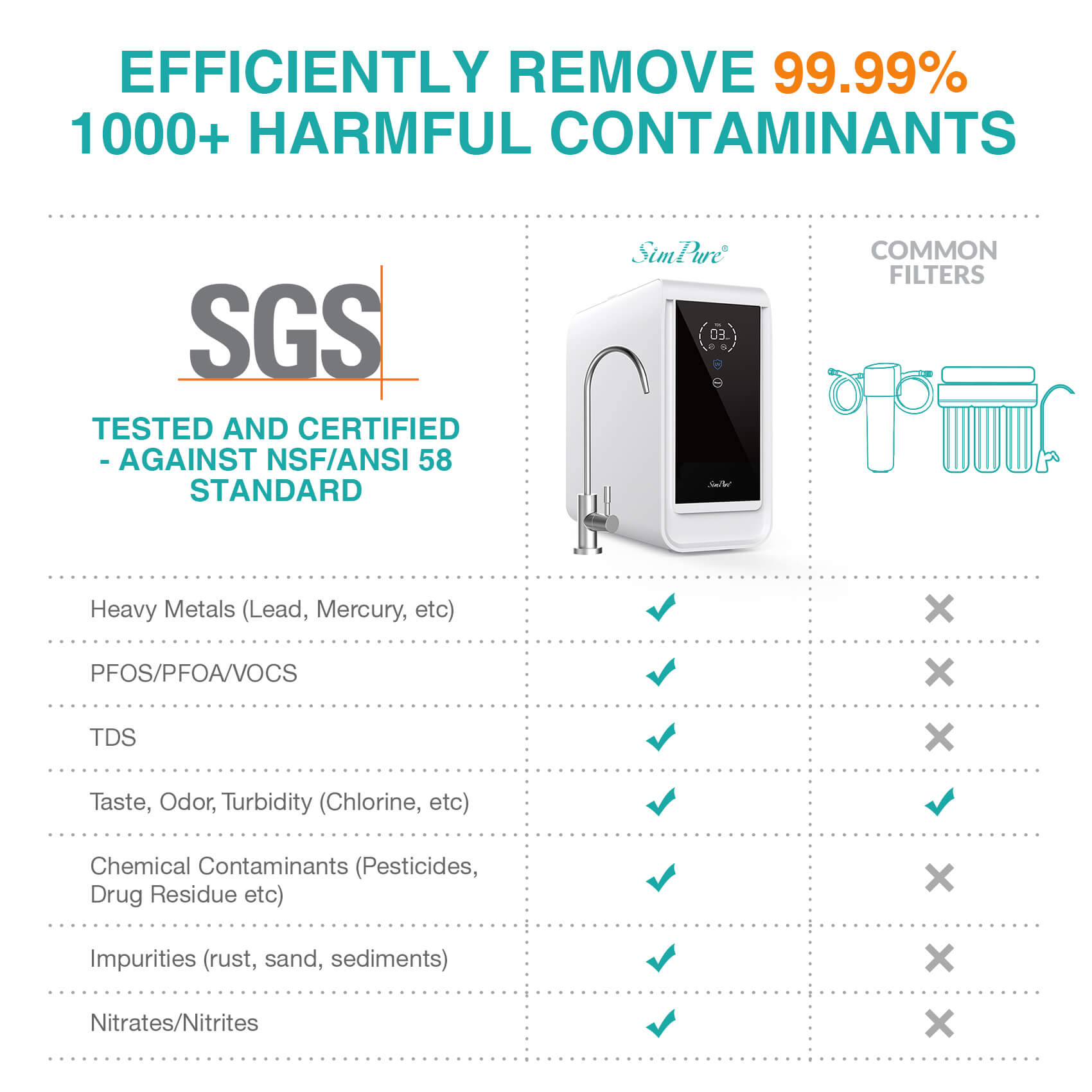According to the WHO survey, 80% of the causes of worldwide diseases are related to the pollution of drinking water. Generally speaking, the water quality of daily water after disinfection is up to the standard of drinking. However, after flowing through the old pipeline, which will produce rust and scale, the water is contaminated. More seriously, it will also carry some invisible bacteria, pathogens and viruses. These will also have terrible effects on human body. Therefore, many people will choose water purifiers to filter tap water. As a water purifier with the highest filtration accuracy, what does reverse osmosis remove? Does reverse osmosis remove bacteria? Of course! A reverse osmosis system is able to effectively filter bacteria, viruses, microorganisms, and other substances in water. The reverse osmosis filter itself is very sophisticated, and the desalination rate is also very high, which is the preferred water purifier for sterilization.
Does Reverse Osmosis Remove Bacteria That Frequently Occurred in Water?
Of course! The water tends to flow from low concentration to high concentration. Once the water is under great pressure, it goes from a high concentration to a low concentration, which called reverse osmosis. Since the pore size of the RO membrane is five parts per million of a human hair, that is, 0.0001 microns, it is invisible to the naked eye. Bacteria and viruses are 5,000 times more than it, so only water molecules and some mineral ions can pass through the RO membrane, and other impurities and heavy metals are discharged from the wastewater pipe. Let's see the common bacteria and viruses in the water and whether a reverse osmosis system can filter them or not in detailed analysis!
1. Does Reverse Osmosis Remove E Coli?

E. coli prefers to reside in the intestines of humans and warm-blooded animals. Diarrhea-causing E. coli can make people abdominal pain, nausea, fever, diarrhea, and also make sudden gastrointestinal cramps, which will endanger your life. Enteroviruses are the most common type of virus in the aquatic environment, which is most studied in hydrovirology. After the raw water is purified through an activated carbon filter, it is pressurized by the pump to the RO membrane, and the pore size is 1/10000 μm, which is equivalent to 1/6000 of the size of E. coli. Therefore, the reverse osmosis filter can completely filter E. coli.
2. Does RO System Remove Bacteria Like Salmonella?

Salmonella is a common pathogenic bacteria in nature and prefers to live in humans and animals body. Among the bacterial diseases that occur in countries around the world, Salmonella often ranks first. It can make people get gastroenteritis, abdominal pain, diarrhea, vomiting, dehydration, and shock in severe cases, and can also make people with low immunity get sepsis. Salmonella has high resistance to the outside world and can survive in water and soil for 2-3 weeks. The body size of Salmonella is generally 0.6 ~ 0.9 microns × (1 ~ 3) microns. With the reverse osmosis system filtration accuracy of 0.0001 microns, Salmonella can surely be filtered out.
3. Does Reverse Osmosis Remove Bacteria Like Vibrio Cholerae?

Vibrio cholerae is short and lively. After entering the human body, it multiplies rapidly somewhere in the intestine, producing a large number of toxins, so that the intestinal fluid is secreted in large quantities. It will cause symptoms such as vomiting, diarrhea, and other symptoms, thus causing cholera. Summer and autumn are the peaks of getting cholera. Vibrio cholerae can be transmitted through water, food, and other ways. The body size of Vibrio cholerae is 0.5 - 0.8 * 1.5 to 3 μm, which is also much larger than the filtration accuracy of a reverse osmosis filter, so it can be removed by the reverse osmosis system.
4. Does RO Filter Remove Legionella?

Legionella is an opportunistic pathogen that often causes fever and respiratory diseases, like having difficulty in breathing, sweating, coughing, and fatal pneumonia. Legionella is widely present in the natural environment, especially in water closely related to human life. So does ro filter remove Legionella? Legionella has a body size (0.3 to 0.4) × (2 to 3) microns, sometimes growing to more than 50 microns. Based on the filtration accuracy of the reverse osmosis water purifier is 1nm, Legionella can also be filtered out.
5. Does RO Filter Remove Rotavirus?

Rotavirus is classified in the family Reoviridae rotavirus. Rotavirus is one of the most common causes of acute diarrhea in children worldwide. Globally, it is estimated that more than 140 million children with rotavirus are affected each year, causing hundreds of thousands of deaths. Intact rotavirus is approximately 70 to 75 nanometers in diameter and has no rough particles with a capsid diameter of 50 to 60 nanometers. An outbreak of rotavirus disease in Colorado, USA, in 1981 was linked to contamination of municipal water supplies. So does ro filter remove Rolavirus? Since the size of the rotavirus is far bigger than the reverse osmosis filter, reverse osmosis can filter the rotavirus completely.
6. Does Reverse Osmosis Remove Coronavirus?

At present, the world is in the era of the epidemic, and whether the coronavirus will spread through water is still uncertain. But we can prevent it in advance. The coronavirus (COVID-19) is about 100 nanometers, and the filtration accuracy of the reverse osmosis membrane is 0.1-1 nanometers. The diameter of the coronavirus is between 80 and 120 nanometers; Taking the common RO purifier in the home as an example, the pore size of the reverse osmosis membrane is as small as 1 nanometer, so the coronavirus with a diameter of about 100 nanometers is naturally filtered out.
To sum up, does reverse osmosis remove bacteria? The answer is YES! The pore size of the reverse osmosis membrane is very small, usually between 0.5 and 10 nanometers, which is the accuracy that even nanofiltration and ultrafiltration cannot be achieved. Usually, the size of bacteria in the water is between 0.5 and 5 microns, and the conversion to nanometers is 500-5000 nanometers. Viruses are much smaller than bacteria, usually between 50 and 100 nanometers in diameter. The volume of viruses and bacteria is much larger than the pore size of the reverse osmosis membrane. There is no doubt that the reverse osmosis membrane is able to filter bacteria and viruses, and the filtration effect is excellent.
If you want to get a reverse osmosis water system for home, you can click the below button to get our best rated SimPure Y7P countertop RO water filter to remove bacteria and viruses from your drinking water!



